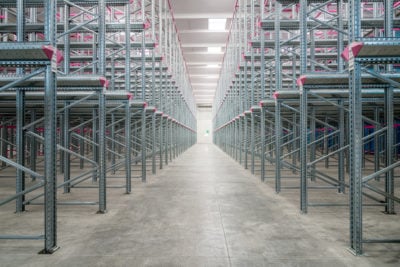Dec 01, 2016
Seven reasons why stock-outs are hurting your profitability

Are you aware of how lost sales impact the profitability of your business? Is this issue apparent to the whole team?
Your profitability is influenced by more than just the very obvious loss of the sale and the impact that has on the bottom line.
The time spent addressing customer concerns, placing emergency orders, and sourcing products could be more usefully deployed doing the right things. If the people involved in this include sales team members, then the time that should be spent generating additional business is lost and the impact on overall profitability will be more severe.
There are a number of factors that contribute to a loss in profitability. Let’s take a look:
1) If the stock-outs are resolved by transferring products from a warehouse that does have stock, the logistical costs associated with moving products on an urgent basis will usually hurt profitability compared to a normal transaction.
2) When sourcing a product from a competitor, the purchase price of these buy-outs is very likely to be higher than your average cost for the product. The sales target may be achieved, but margins will be reduced.
3) Should it be necessary to place an emergency order with your supplier, you’ll likely be purchasing a smaller quantity. For example, items normally brought in by sea freight may have to be brought in by air freight. It is usually not viable to ship the normal requirement by air with the result that the emergency quantity being ordered will be smaller than usual. Volume discounts may be lost.
4) Items shipped by container may result in “less than container loads” (LCL) being shipped. This will increase freight costs.
5) In the case of the long lead time items, the order pipeline is very likely to be full already. In situations where an existing purchase order can be brought forward so that it arrives earlier, additional costs may be incurred. This process consumes working capital and could occupy warehouse space that was intended for other products. These emergency orders are often in excess of your requirements. The time saving of air freight deals with the immediate stock-out issue, but the cost impact can be dramatic.
6) As previously mentioned, the cost of losing a customer to a competitor, especially where the customer had previously sourced a basket of products from your business, would have an impact beyond the individual stock-out issue. And that means your competitors’ businesses will be growing at your your expense.
7) The impact on the brand may be more difficult to quantify, but what’s certain is that rebuilding confidence in your brand will take time and money. The same money could have been spent more beneficially promoting your brand. The difference between these two impacts profitability.
The impact on the sales team was explored in a previous post primarily from the perspective of the sales teams motivation and general morale. A continuous stream of customer orders is the lifeline of most businesses. Even where a high portion of a sales team’s expenses are variable (commission based), there will almost always be a fixed cost portion. Lower sales on a fixed cost base will result in reduced profitability.
In the next post, we’ll take look at what is to be considered from the company perspective when addressing a continually high level of stock-outs. Here’s a hint: the real causes may lie in areas you hadn’t considered.
Deslee Mattex, a manufacturer of mattress fabric, was experiencing continual stock-outs from incorrect forecasting. Download their case study and read their journey to inventory health.
Written by Barry Kukkuk
In 2010 Barry began his journey with NETSTOCK. His enthusiasm for Inventory Management and his strong belief in “all things Cloud” collided resulting in the release of the Inventory Management solution - NETSTOCK. Barry is the CTO at NETSTOCK, where he is responsible for all customer-facing technologies and systems that keep thousands of NETSTOCK customer instances working correctly.

